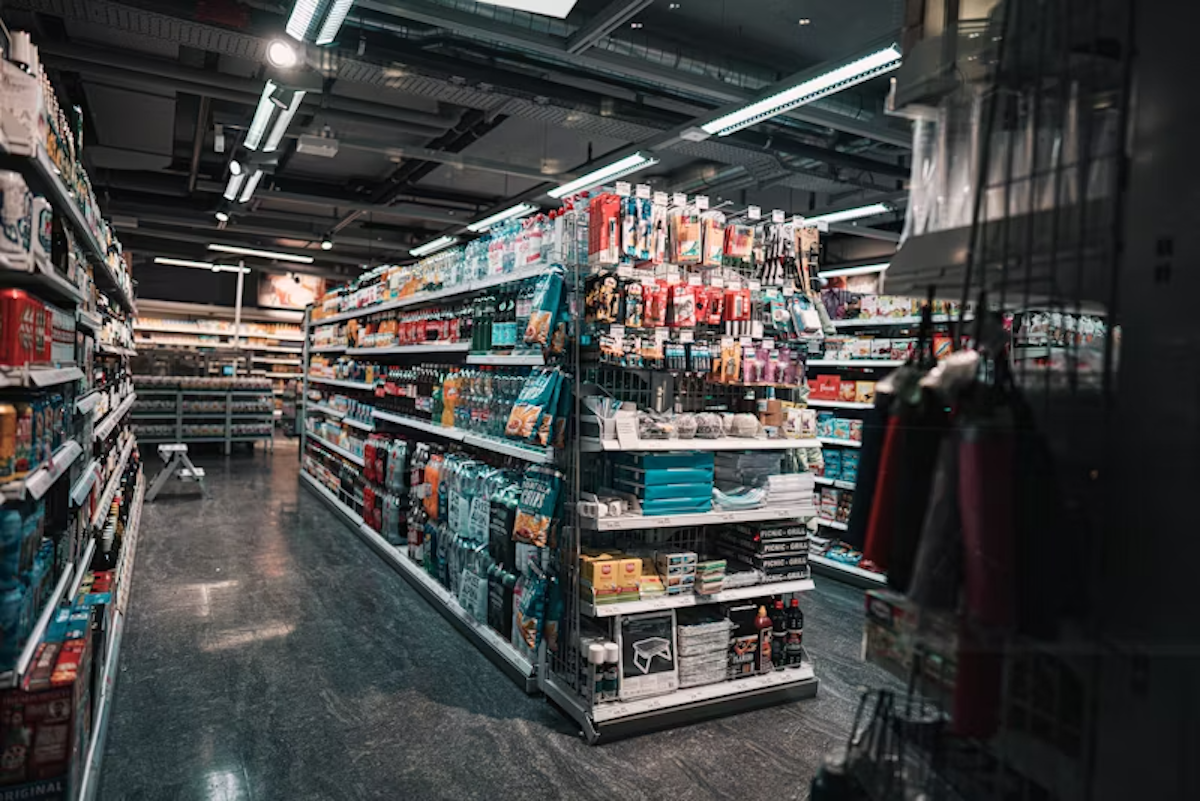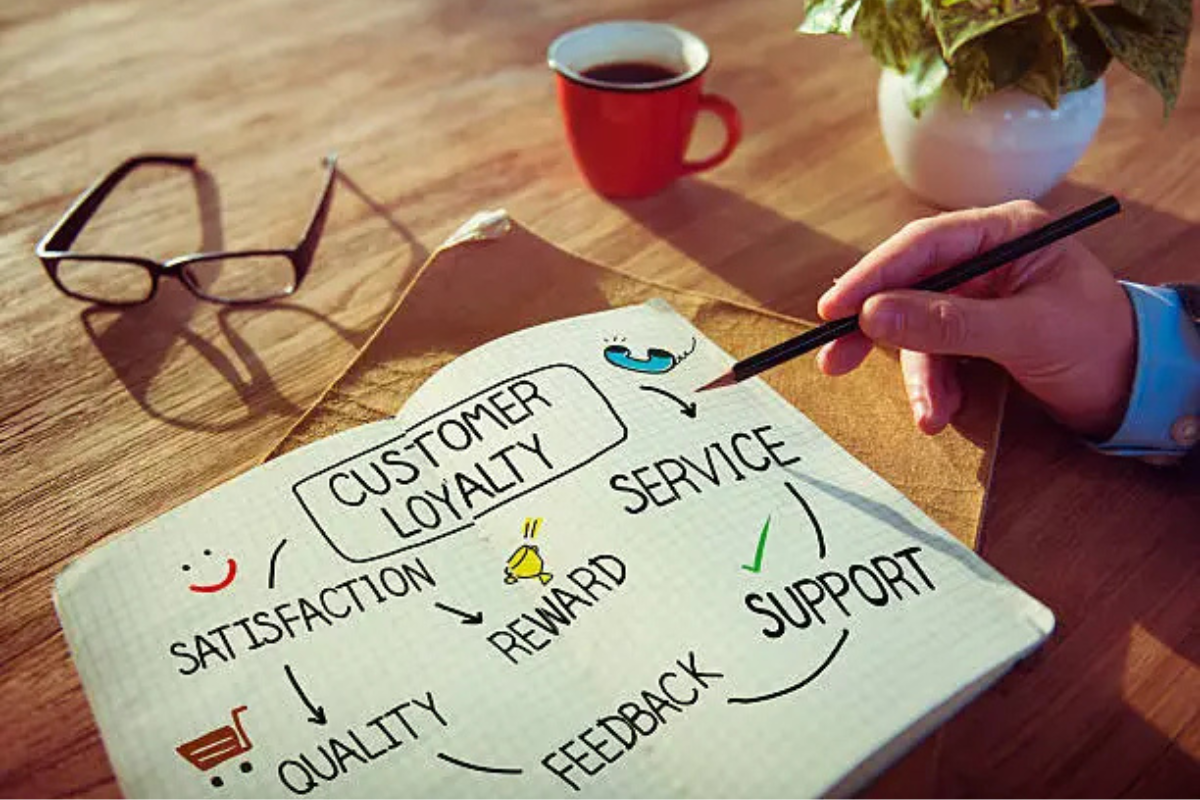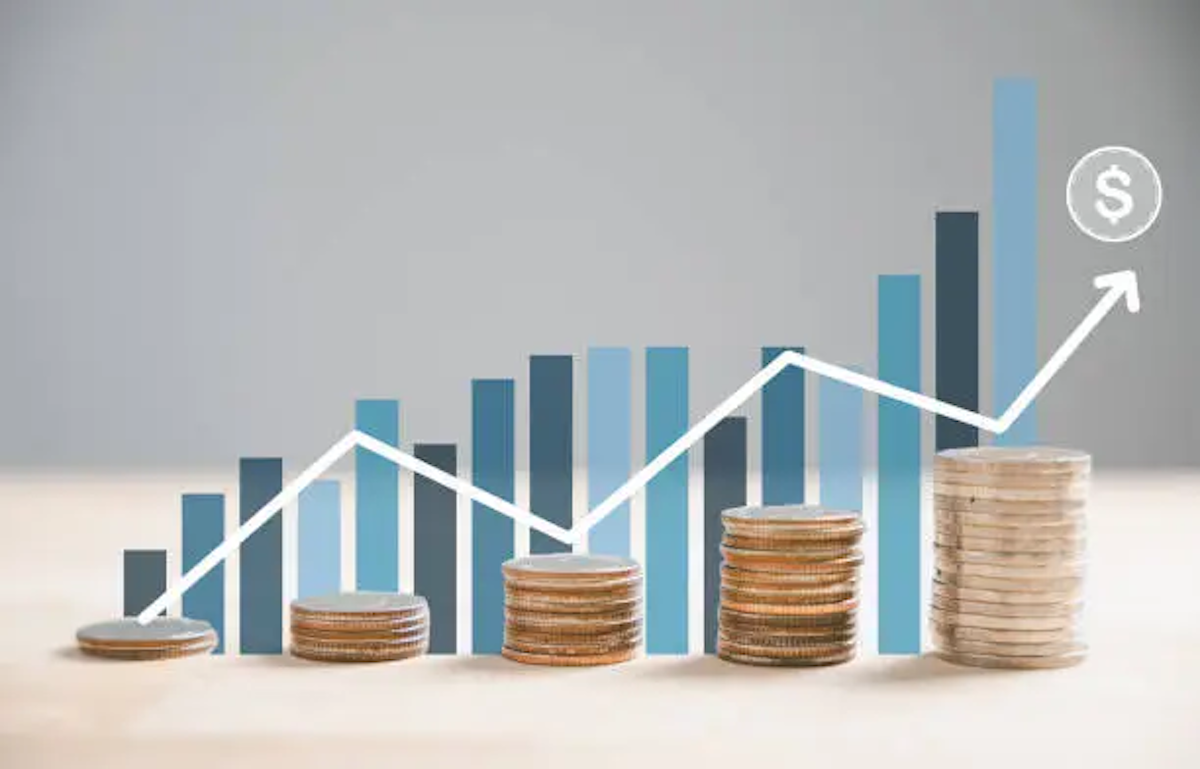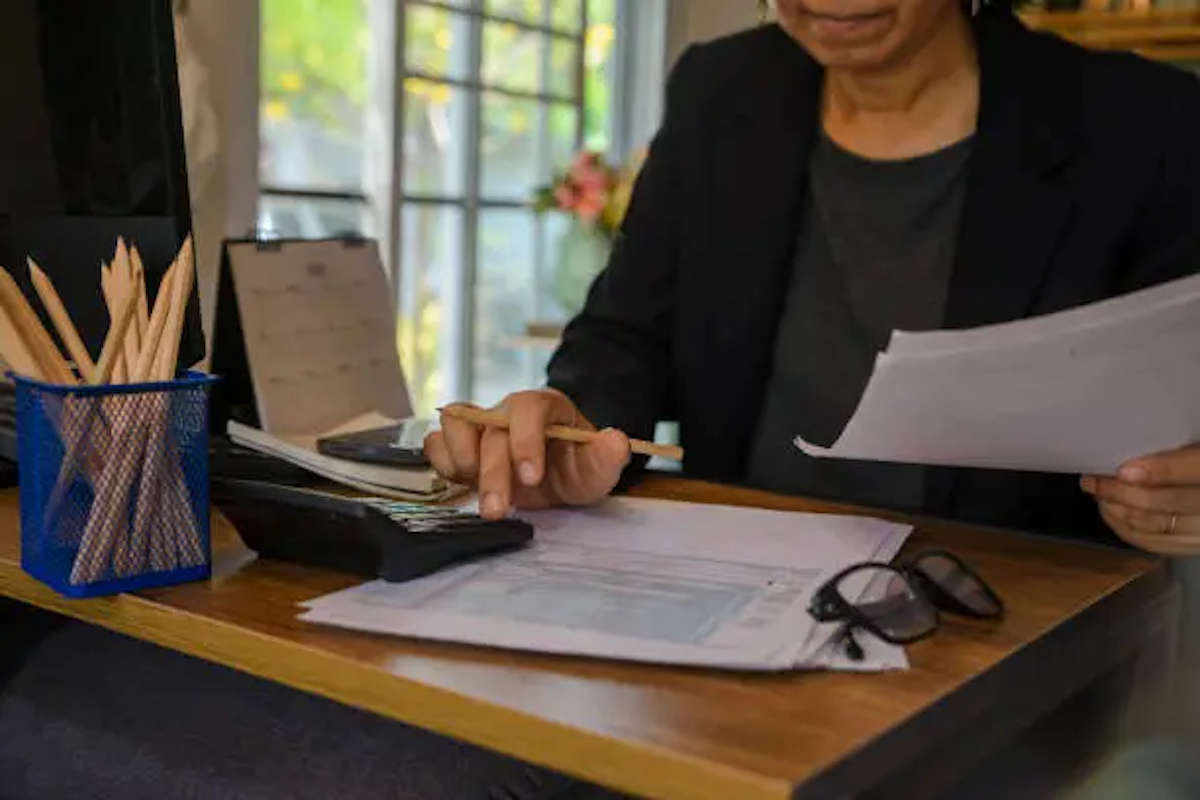15 Tips for Maximizing Consumer Loyalty with Your Brand
\Did you know that existing customers spend 67% more than new customers? This isn’t just an interesting statistic—it’s a clear indicator that...
Platform
Combining online ordering, loyalty, omnichannel messaging, AI insights, and payments in one platform. Paytronix delivers relevant, personal experiences, at scale, that help improve your entire digital marketing funnel by creating amazing frictionless experiences.
A Complete Customer Experience Platform
Online Ordering
Acquire new customers and capture valuable data with industry leading customization features.
Loyalty
Encourage more visits and higher spend with personalized promotions based on individual activity and preferences.
Catering
Grow your revenue, streamline operations, and expand your audience with a suite of catering tools.
CRM
Build great customer relationships with relevant personal omnichannel campaigns delivered at scale.
Artificial Intelligence
Leverage the most data from the most customer transactions to power 1:1 marketing campaigns and drive revenue.
Payments
Drive brand engagement by providing fast, frictionless guest payments.
Solutions
We use data, customer experience expertise, and technology to solve everyday restaurant and convenience store challenges.
Contactless Experiences
Accommodate your guests' changing preferences by providing safe, efficient service whether dining-in or taking out.
Customer Insights
Collect guest data and analyze behaviors to develop powerful targeted campaigns that produce amazing results.
Marketing Automation
Create and test campaigns across channels and segments to drive loyalty, incremental visits, and additional revenue.
Mobile Experiences
Provide convenient access to your brand, menus and loyalty program to drive retention with a branded or custom app.
Subscriptions
Create a frictionless, fun way to reward your most loyal customers for frequent visits and purchases while normalizing revenues.
Employee Dining
Attract and retain your employees with dollar value or percentage-based incentives and tiered benefits.
Order Experience Builder
Create powerful interactive, and appealing online menus that attract and acquire new customers simply and easily.
Loyalty Programs
High-impact customizable programs that increase spend, visit, and engagement with your brand.
Online Ordering
Maximize first-party digital sales with an exceptional guest experience.
Integrations
Launch your programs with more than 450 existing integrations.
Loyalty Programs
Deliver the same care you do in person with all your digital engagements.
Online Ordering
Drive more first-party orders and make it easy for your crew.
Loyalty Programs
Digital transformations start here - get to know your guests.
Online Ordering
Add a whole new sales channel to grow your business - digital ordering is in your future.
Integrations
We work with your environment - check it out.
Company
We are here to help clients build their businesses by delivering amazing experiences for their guests.
Meet The Team
Our exceptional customer engagement innovations are delivered by a team of extraordinary people.
News/Press
A collection of press and media about our innovations, customers, and people.
Events
A schedule of upcoming tradeshows, conferences, and events that we will participate in.
Careers
Support
Paytronix Login
Order & Delivery Login
Resources
Learn how to create great customer experiences with our free eBooks, webinars, articles, case studies, and customer interviews.
FlightPaths are structured Paytronix software onboarding journeys designed to simplify implementation and deliver maximum ROI.
See Our Product In Action
E-Books
Learn more about topics important to the restaurant and c-store customer experience.
Reports
See how your brand stacks up against industry benchmarks, analysis, and research.
Blog
Catch up with our team of in-house experts for quick articles to help your business.
Case Studies
Learn how brands have used the Paytronix platform to increase revenue and engage with guests.
Is your brand tapping into these three unshakeable pillars of guest loyalty in 2025?
8 min read
Feb 20, 2025

Convenience store interior design is crucial for attracting customers and turning casual visits into substantial sales. Whether they stop by for a quick morning coffee or to pick up snacks for a road trip, every element of the store impacts their experience.
Your store's interior design isn't just a backdrop; it's a powerful engine for driving sales and customer loyalty. Impulse buys influence a significant portion of convenience store revenue, so creating the right environment is critical. Studies suggest that strategic store layout and design can boost sales by up to 20%, meaning a well-planned interior could be the key to unlocking substantial profit growth.
This article explores how optimizing everything from your entryway to your checkout counters can transform your space into a conversion powerhouse, offering valuable insights for retailers and design professionals.
Convenience store interior design refers to the strategic planning and organization of a store’s layout, fixtures, and aesthetics to optimize the customer experience. A well-planned convenience store design ensures that traffic flows seamlessly, products are easily accessible, and clients feel welcomed.
Effective design ensures that:
A convenience store’s interior should cater to both functionality and comfort. Here are six critical areas to prioritize:
First impressions matter. Clear and welcoming entry and exit points set the tone for the shopping experience. Use open spaces, clear signage, and automatic doors to create an inviting entrance. Ensure that exit points are easily identifiable to maintain a smooth traffic flow.
Design your checkout area with visual merchandising concepts, using a small basket near the counter to encourage last-minute purchases of snacks or beverages. Place high-margin, small items like snacks and batteries near the checkout counter. Ensure that counters are ergonomic and wide enough to handle peak traffic efficiently.
Optimize aisle spacing to allow customers to move comfortably while browsing. Organize shelves with popular products at eye level and use endcaps to highlight promotions or new arrivals. Incorporating the latest trends, such as endcaps with QR code-enabled discounts or curated snack bundles, can increase customer satisfaction.
Clear signaling and logical categorization make it easier for customers to find what they need. A well-organized layout can guide visitors through the store, making it easier to complete their purchases and increase the likelihood of an additional sale.
By offering restrooms that cater to modern consumer needs and maintain a clean, accessible site, you create a good impression among visitors. Restrooms also offer a sense of convenience, especially for travelers, which increases the likelihood of repeat visits. Add signs directing visitors to these facilities to enhance their accessibility and value.
Adding small seating spaces, even a bench, offers a break for your customers and extends their time in-store. A small cafe-style nook, for instance, could encourage them to purchase beverages or snacks to enjoy on-site, fostering a sense of community and relaxation.
On the other hand, businesses can get creative. For instance, a convenience store in Texas could tap into local culture by including seating areas inspired by Texan decor, creating a unique ambiance for its customers.
Place high-demand seasonal products in temperature-controlled sections. For example, chilled beverages in summer should be easily accessible, while hot food displays can attract people during colder months. Consider using promotional signage to highlight these zones. This tactic not only improves visibility but also drives targeted seasonal offerings.
Integrating technology into your store design can dramatically increase visitor interaction and streamline operations, giving your business a competitive edge. Here’s how technology can transform your store:
Moreover, these technologies collect valuable data on consumer preferences and shopping patterns. By analyzing this data, you can refine product placements, optimize inventory, and personalize the experience for your customers, ensuring a store design that improves continuously.
Lighting and color are powerful tools that influence each visitor’s behavior and the store’s atmosphere. The right combination can subtly guide purchasing decisions and create a memorable experience.
Combine ambient, task, and accent lighting to craft a dynamic and welcoming environment. For example, the federal government’s Energy Star program found that upgrading to LED lighting resulted in a 19 percent increase in grocery store sales. Similarly, adjustable lighting in refrigerated sections draws attention to cold beverages during the summer.
On the other hand, proper installation of modern LED lighting during a remodel not only improves energy efficiency but also enhances the ambiance of your convenience store design. Lighting upgrades can also be opportunities to showcase a store’s new look, aligning with a forward-thinking vision for customer satisfaction.
Colors evoke emotions and influence shopper decisions. Cool tones like blues and greens can create a calming atmosphere, ideal for areas with essential items. In contrast, warm colors like red and yellow stimulate appetite and encourage impulse purchases, making them perfect for snack and beverage sections.
Convenience stores can create a visually appealing environment and boost sales by strategically using lighting and colors. In fact, there are entire psychology courses and scholastic publications centering around this topic!
Promotional displays can also boost sales when executed strategically. Here are five methods to optimize your in-store signage and convenience store marketing:
A comfortable shopping environment caters to a wider range of customers and encourages longer visits. By prioritizing comfort and accessibility, you create an inclusive and welcoming space for all shoppers, ultimately increasing satisfaction and sales. Here’s how you can achieve an enriching customer experience with comfort and accessibility:
The exterior of your store plays a critical role in capturing attention and encouraging visits. A thoughtfully designed exterior can set your store apart from competitors and effectively reflect your brand’s identity.
Here are five ways to maximize its impact:
With frequent disruptions in retail trends like e-commerce, convenience stores need to focus on future-ready designs that adapt to changing consumer preferences. This proactive approach ensures that your store remains functional and engaging. Here are three ways to stay ahead of the game:
By integrating these practices, you can ensure that your store remains responsive to trends and consistently optimized for performance. Plus, you can surpass the competition when necessary.
Thriving convenience store design requires a clear vision and a commitment to understanding local consumer needs. Whether it is increasing functionality, boosting sales, or creating a more inviting atmosphere, effective redesigns can transform how people perceive and use a space.
The following case studies demonstrate how strategic store remodels, tailored to specific challenges and opportunities, deliver massive results for business growth and customer satisfaction. Read on.
Synergy Cooperative’s Cenex-branded location in Cumberland, Wisconsin, faced the challenge of creating a welcoming, community-oriented atmosphere while attracting heavy cabin traffic. Through CHS’s LIFT initiative, the store underwent a comprehensive transformation that included new LED-lit signage visible from over 300 yards away, vaulted knotty pine ceilings, and open-air coolers displaying local products, like meats, cheeses, and honey.
The results were outstanding. The modernized design increased foot traffic, with customers praising the store’s warm Northwoods aesthetic and well-stocked inventory. By incorporating local goods and a community-focused approach, Synergy Cooperative not only met customer expectations, but exceeded them, benefiting the local economy and the cooperative’s bottom line. This redesign highlights the importance of blending modern conveniences with local charm to create a memorable shopping experience.
Dépanneur Beauséjour, located in Quebec, is a one-stop shop offering gas, alcohol, food supplies, and rest services. However, its cramped layout and outdated furniture created challenges, making shopping less practical and appealing. To resolve these issues, they installed robust, space-maximizing furniture and redesigned the store with a boutique feel to attract female customers, who are known to spend more.
The design changes improved customer flow and visibility, while strategically placed pathways reduced theft. Angled cashier counters optimized surveillance and navigation throughout the store. As a result, Dépanneur Beauséjour experienced a 29% sales increase and an 8% rise in transactions. This redesign improved functionality and established the store as a standout destination in the area.
Want to learn more? Here are some frequent questions and answers to help you optimize your convenience store's interior design for maximum impact.
The best layout for a convenience store depends on the store size, product range, and customer traffic patterns. A grid layout is ideal for smaller spaces with high inventory, while a loop layout encourages browsing by guiding customers through a set path. Free-flow layouts are better for promoting exploration and are often used in high-end stores.
Herringbone layouts optimize tight or narrow spaces, ensuring efficient use of limited areas. No matter what, the layout should increase customer convenience and product visibility.
Convenience stores primarily use four types of layouts: grid, loop, free-flow, and herringbone. Each layout has specific advantages depending on the store's goals:
Convenience stores typically house diverse products to meet customer needs, including snacks, beverages, and ready-to-eat meals for quick consumption. They also stock household essentials such as batteries, cleaning supplies, and personal care items. Over-the-counter medications like pain relievers or vitamins are often available.
Additionally, convenience stores offer specialty items such as cigarettes, lottery tickets, and gift cards. Seasonal goods, like holiday decorations or limited-time promotional items, add variety and keep the inventory relevant.
Convenience stores make the most profit from high-margin and high-demand items, such as:
Optimizing your convenience store interior is an ongoing process requiring strategic planning and flexibility to adapt to current trends. A thoughtfully designed store will align with your guests' needs, creating a memorable experience that fosters loyalty both in-store and through your loyalty app's loyalty program design.
Start by gathering insights from customer feedback and analyzing sales data to pinpoint opportunities for improvement. For example, reorganizing product categories or improving the checkout process can lead to higher sales and greater customer satisfaction.
Collaborate with design professionals to ensure your store’s layout reflects your brand’s identity while maximizing functionality. Introduce periodic updates to keep the shopping environment fresh and engaging. Whether you’re planning a remodel or looking to tap into the latest trends, a clear focus on store design ensures long-term success.
Take the next step today: Book a demo with Paytronix to transform your convenience store. For additional insights, download our free guide on Choosing a Loyalty Program for Your Convenience Store.

\Did you know that existing customers spend 67% more than new customers? This isn’t just an interesting statistic—it’s a clear indicator that...

A profitable restaurant business means it generates more income than it spends. It will also have a comfortable financial safety net as well as the...

A steady revenue stream signals a restaurant’s success. It builds a solid financial baseline that you can lean on when experimenting with new menu...